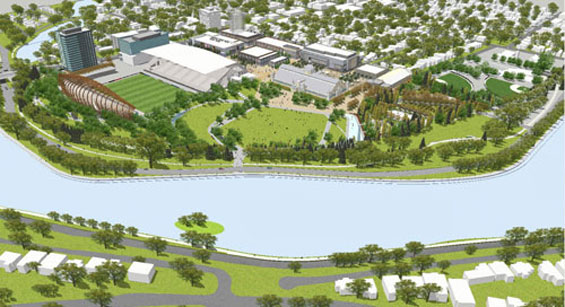
Phillips Farevaag Smallenberg (PSF) design was recommended for Lansdowne Park after a winning the design competition held back in 2010 beating out Michael Van Valkenburgh Associates, SWA, West 8 and Williams, Asselin, Ackaoui & Associates. Phillips Farevaag Smallenberg have continued on with the design process over the last two years have been working as part of the team of other design professionals and City of Ottawa to integrate the new park design with other elements of the project. The ‘new Lansdowne’ project includes – a large new park(Lansdowne Park), a re-designed stadium and Civic Centre, and a village of boutique shops and stores, services and residences – into a single plan.
The project is to revitalize historic Lansdowne Park through refurbishment of its stadium and arena, creation of a large, intricately designed new urban park and development of a lively residential-commercial village with strong connections to adjacent neighbourhoods in the Glebe and Old Ottawa South.
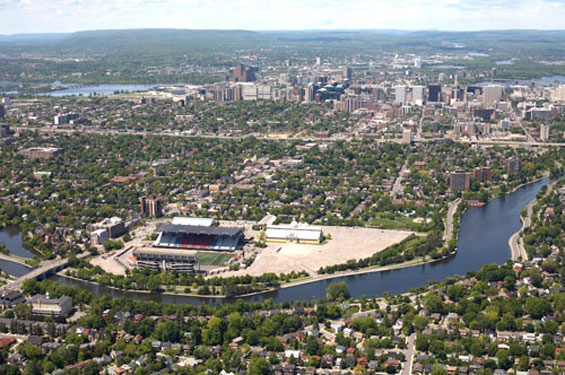
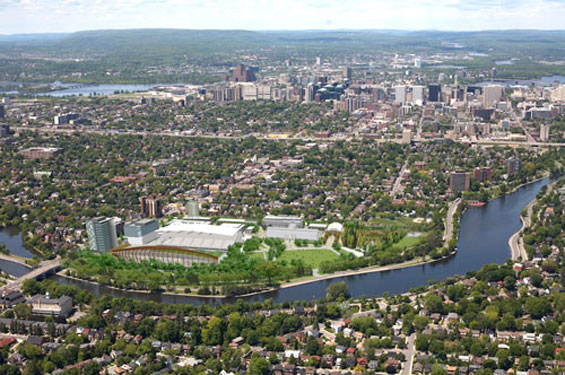
Lansdowne Park has a cultural history in national politics, professional sports, agriculture and commercial exhibition. Lansdowne’s buildings over time have fallen into disrepair or been demolished and now the site is visually dominated by its parking lots with room for 2,000 cars. The redevelopment of Lansdowne is intended to change that, turning this public property into a lively, pedestrian-oriented urban village and destination for events large and small.
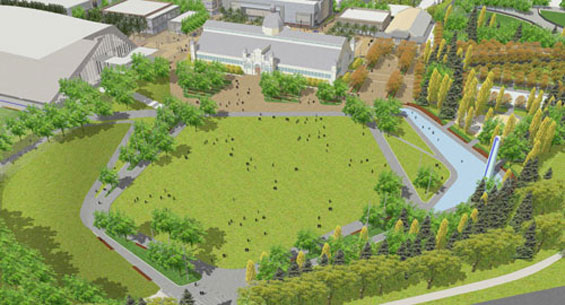
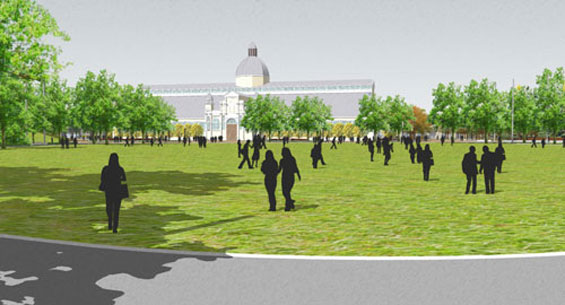
Phillips Farevaag Smallenberg design competition vision statement gives the vision back in 2010
Lansdowne Park has held a complex relationship to the city of Ottawa. Its grand scale and civic focus has given it regional and national status, marked by sporadic and intense exhibition and sporting events. Its cultural and ceremonial importance is reinforced by physical linkages to Parliament Hill, Dow’s Lake, the Central Experimental Farm and other major institutional sites via the Rideau Canal and the NCC Parkway. It functions simultaneously as a much loved neighbourhood park accommodating everyday recreational program for nearby residents. Currently, these functions occur in an uncoordinated and disconnected fashion, involving separate areas of the park.
Lansdowne Park is at a pivotal point in its evolution. When it was functioning as a more integrated site, hosting events of national prestige and showcasing the best of Canadian skill and ingenuity, the park had a much more significant civic and national identity. The fragmentation and dissolution of the site keeps undermining that embedded value. The plan proposed by OSEG needs to be sensitively and imaginatively integrated within the overall park scheme to avoid dissipating the Park’s already lagging identity and expression as both grand civic destination and intimate neighbourhood amenity. The parkland component needs to maximize its visibility, identity and connectivity in multiple ways. Otherwise it will be perceived as leftover, inaccessible space incidental to a commercial development. Win Place Show reinstates Lansdowne Park as a single, rich, multilayered node in the mental map of the city and the region. It makes it more accessible, more visible and more diversified.
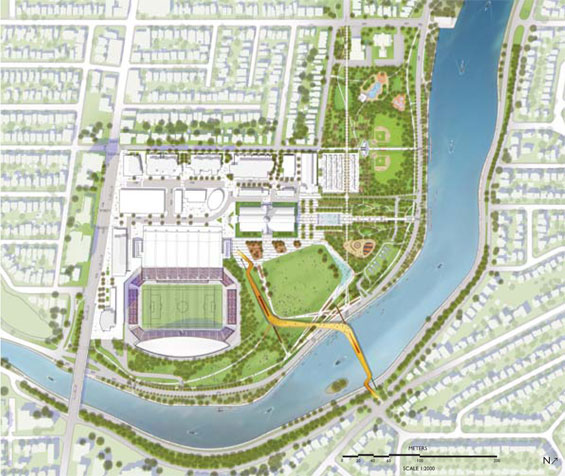
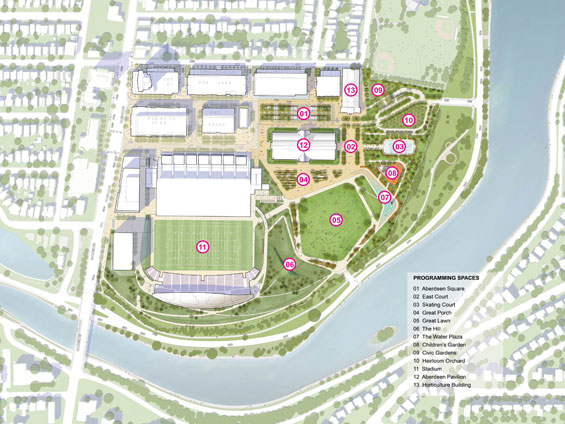
As is evident from the master plans (above) there have been design changes since the design competition 2010 over the last two years under the guidance of the Lansdowne Design Review Panel and the City of Ottawa. Gone is the bridge and strong axis joining the river to the Aberdeen Pavillion, but many other elements remain including the Great Lawn, the water plaza, the children’s garden and several pavillions.
Construction of the urban park is set for January 2014.
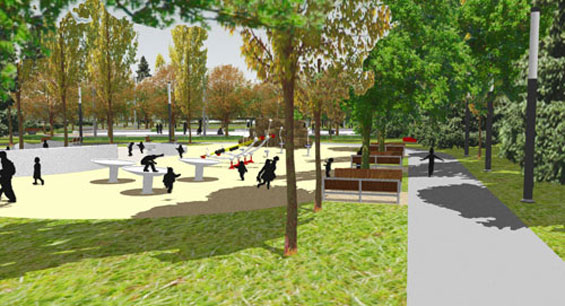
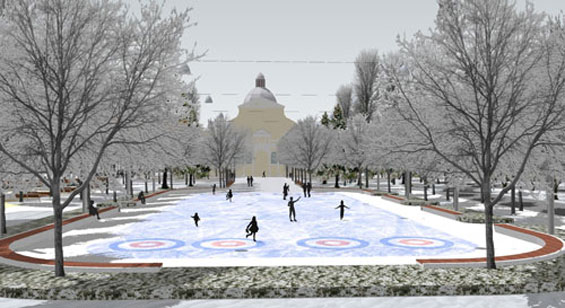
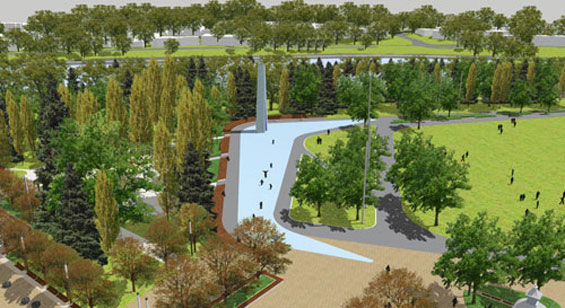
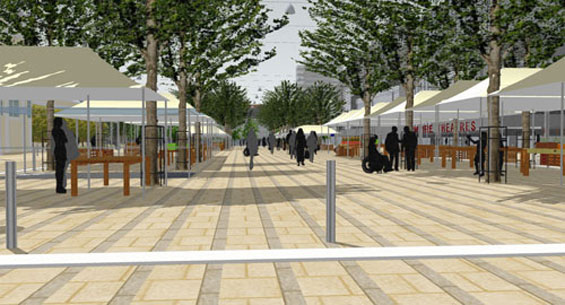
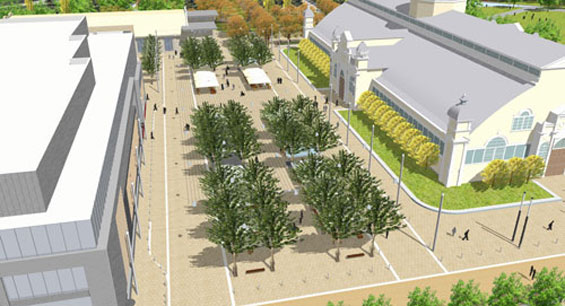
Following are some illustrations and facts about Lansdowne as it is today, and as it would be after the proposed redevelopment:
| Features | Before | After |
|---|---|---|
| Asphalt | 26.8 acres (Lansdowne’s total property is 38.6 acres) | 1.8 acres (accessible pathways through greenspace for pedestrians and cyclists, ramps and access lanes) |
| Park Space | 6 acres (including the stadium playing field) | 18.5 acres (including public plazas) |
| Trees | 230 | 880 |
| Event Spaces | Four (Aberdeen Pavilion, Civic Centre, stadium, Farmers’ Market) | 20(Bank Street Esplanade, Aberdeen Way, Lansdowne Way, residential courts, retail courts, the Event Square, Aberdeen Square (Farmers’ Market), the East Court, the Skating Court, the Great Porch, the Great Lawn, the Water Plaza and Beacon, Civic Demonstration Gardens, the Children’s Play Space, the Hill and Screen, the South Berms, the Stadium Plaza, the Stadium Field, Aberdeen Pavilion, Civic Centre) |
| Bicycle parking spaces | 32 | 450 (1,970 on major event days when two bicycle corrals would be used) |
| Sidewalks and Pathways | 35 metres (approximate) | 7.2 kilometres |
| Bench seating for the public | 20 benches | One kilometre of benches and seating walls |
| Public Art | Three pieces (Thomas Ahearn Memorial Drinking Fountain; Memorial to the founding in Ottawa in 1914 of the Princess Patricia’s Canadian Light Infantry Division; and the “Cows Fly Home” piece at the western entrance of the Aberdeen Pavilion) | Five pieces (including two new major art installations: The Beacon and The Screen, plus retention of the three existing historic pieces) |
IMAGES: Courtesy of City of Ottawa
Other Consultants involved include Cannon Design (design for the redeveloped stadium and Civic Centre), Perkins Eastman (commercial and residential village next to Bank Street) Julian Smith (heritage conservation of the Horticulture Building).

